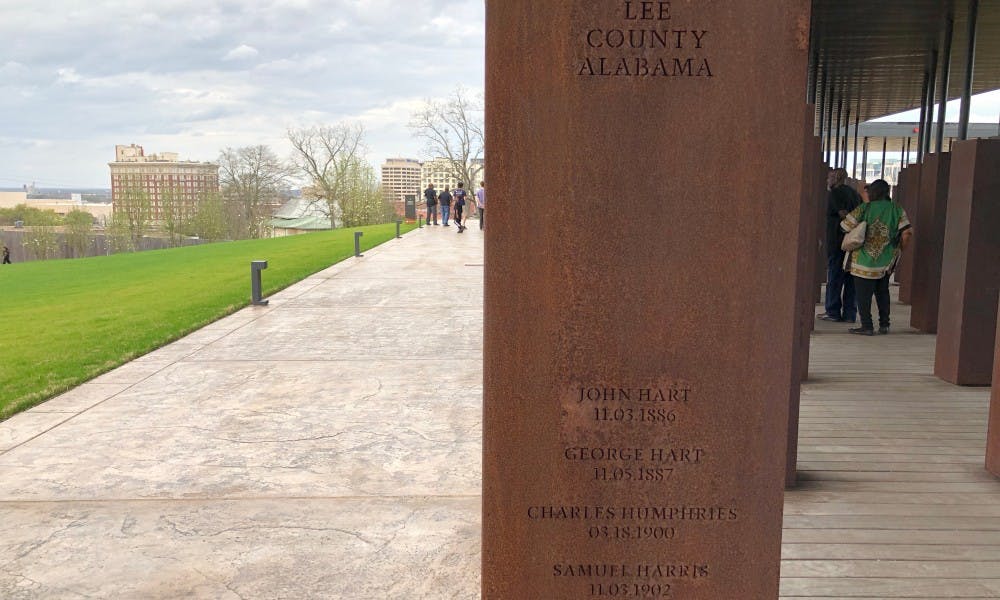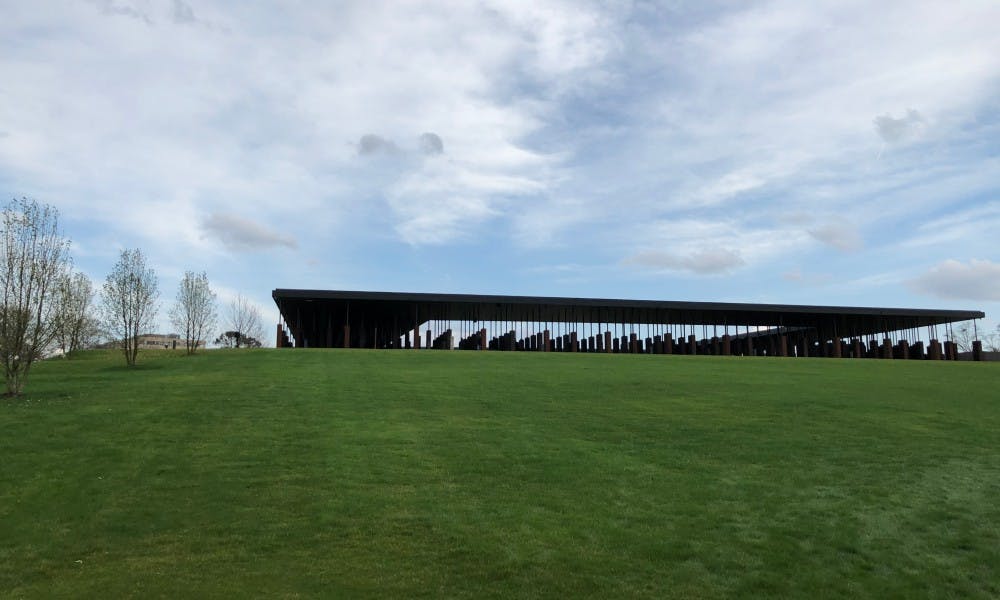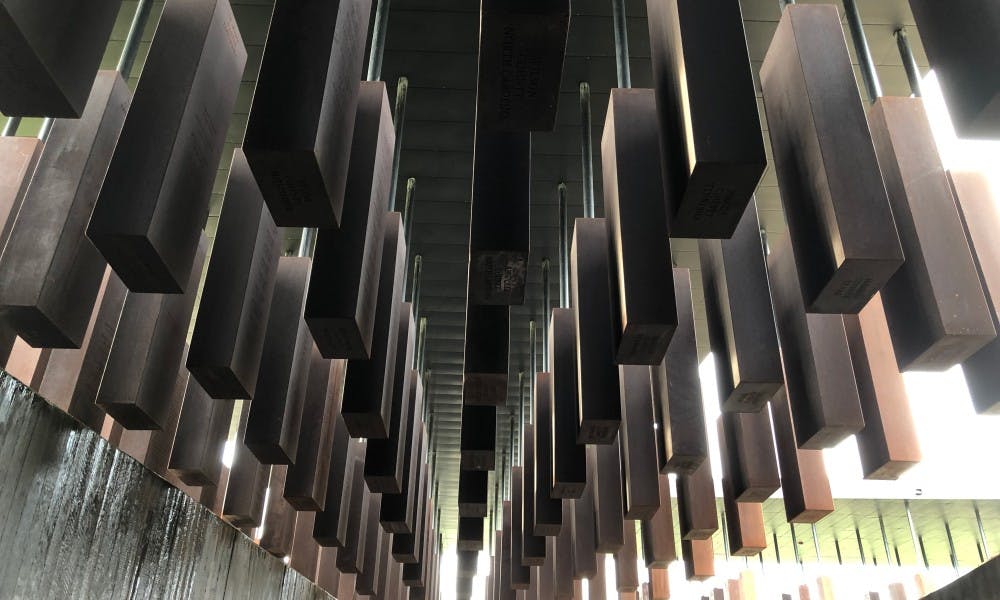There is a shed in Thomaston, Alabama, that stands in defiance of human justice.
Rufus Lesseur, a black man born in 1880, lived in that small town of Thomaston, and he died there, too.
On Aug. 14, 1904, Lesseur was accused of sexually assaulting a white woman and then seized by a mob of unmasked white men who locked him in that shed.
Lesseur was kept in this makeshift prison for two days.
On Aug. 16, Lesseur was dragged outside, lynched and shot. He was never officially charged with a crime, given a trial or convicted of anything. He was 24-years-old.
The white men in the mob did not kill Lesseur because of his political views or his opinions on tax policy. He wasn't imprisoned for being a Communist or a Socialist. He was hanged and shot for being black.

Lesseur is one of four black Americans believed to have been lynched in Marengo County. He is one of 361 reported lynchings in the state of Alabama and one of over 4,000 lynchings across the country.
Last Thursday, 115 years after Lesseur's murder and 11 miles from Thomaston in the town of Linden, Alabama, a man wrote and published an editorial piece that called for the Ku Klux Klan to lynch public officials in Washington D.C.
Goodloe Sutton, 79, publishes The Democrat-Reporter in Linden and recently admitted to authoring the inflammatory editorial piece.
Titled "Klan needs to ride again," Sutton's editorial piece blames Democrats for every American war since 1911, claims that some of the murders committed by the Ku Klux Klan were actually just former slaves dressing up in their masters' robes and, most notably, calls for the Klan to ride through the neighborhoods of D.C. and "raid the gated communities up there."
While it may be easy to write Sutton and his editorial off as just radically far right and racist, as a Democratic society that relies on facts and honest opinion to govern, we should duly scrutinize our presses.
Sutton's editorial and the comments he later made to The Montgomery Advertiser serve as an example of the lasting Confederate scar that stretches across the South. As southerners, it is imperative that we recognize and understand this scar so that we can work through our violent past, instead of denying it.

Officially, the Confederacy ended in 1865. Economic hardships, political instability and a brutal Union invasion led to a complete surrender of the Confederate government.
However, even though the gunfire had stopped, the fighting had just begun.
The lynchings of former slaves and the rise of the Ku Klux Klan intended to instill fear in the recently freed black communities.
Then, in 1894, two women officially formed the United Daughters of the Confederacy with the intention to"tell of the glorious fight against the greatest odds a nation ever face, that their hallowed memory should never die."
Growing steadily through the end of the 19th century, the UDC began to wield considerable lobbying power.
The group began demanding that Southern history textbooks depict the Civil War from a definitively Southern point of view.
In many of these textbooks, enslaved is present as a benign factor in a slave's life. Many enslaved people are even described and depicted as happy.
That Southern point of view also emphasized the hopelessness of the Confederate secession that gave rise to the "Lost Cause" narrative that states that Confederate soldiers should be honored for their loyalty in the face of overwhelming defeat.
In the early 1900s, the UDC was also very successful at raising money and building statues and memorials to Confederate soldiers, many of which are being contested today.
This group was so successful at this, that they were able to build a monument to the Confederate dead in Arlington National Cemetery.
The UDC was also a fervent supporter of the violent actions taken by the Klan.
During the era of Jim Crow, the UDC preserved Klan artifacts and built a memorial to them in North Carolina.
The influence of the UDC remained very strong through the Civil Rights movement.
Many of the Southern textbooks printed in the 1950s and '60s maintained the "Lost Cause" while also skipping over the decades of lynchings following the Civil War.
In essence, the UDC spent millions of dollars over seven decades to reshape the images of the Confederacy, the Civil War and the Klan.
As is evident in Sutton's Valentine's Day editorial, we are still living with the consequences of that reshaping.
When Sutton dismisses the Ku Klux Klan as an organization that only resorted to violence when they need to, he is repeating the statements made by the UDC in textbooks.
Given the vast inaccuracy of this statement, it is now nothing more than willful ignorance that keeps that opinion relevant, but it wasn't something this one man fabricated.
By calling for that racist organization to ride through the streets of Washington D.C. and "get the hemp ropes out, loop them over a tall limb and hang all of them," Sutton is displaying an egregious negligence to the racist history of lynching.
Black Americans were not lynched in the South because they wanted to raise taxes. They were not lynched because they were communists or socialists. They were lynched because racist white people could not stand having a black person in their town.
Sadly, given Sutton's position as a professional publisher of a community newspaper, he is responsible for correctly informing his readership of the realities of their society.
Instead, he has chosen to use his platform to spout racist and ignorant statements which do not deserve to be published.
We must make a concerted effort to denounce and rebuke these vile statements in all forms.
We must also examine the complicated narratives of history that have been warped and utilized for political gain.
Last year, the Equal Justice Initiative opened a museum and memorial in Montgomery, Alabama, honoring the victims of racially charged lynchings in America.
In their National Memorial for Peace and Justice, 805 rusted steel rectangles hang and represent the more than 4,000 Americans who were lynched.
Both the memorial and the Legacy Museum reveal the true terror of racial violence.
In the museum, jars full of dirt line the walls of the main exhibit. Each jar is labeled with the name and location of a lynching in America, and the dirt inside is taken from the spot where it occurred.
Rufus Lesseur's jar is full of dark brown earth taken from outside that shed.
I found it when I went to Montgomery this weekend.
Mr. Sutton, you and I are both journalists, and we are both Alabamians. Going to this museum and memorial was an incredible learning experience that I wish to share with you. Meet me at the National Memorial for Peace and Justice in Montgomery, and I will pay for your ticket.
Do you like this story? The Plainsman doesn't accept money from tuition or student fees, and we don't charge a subscription fee. But you can donate to support The Plainsman.





